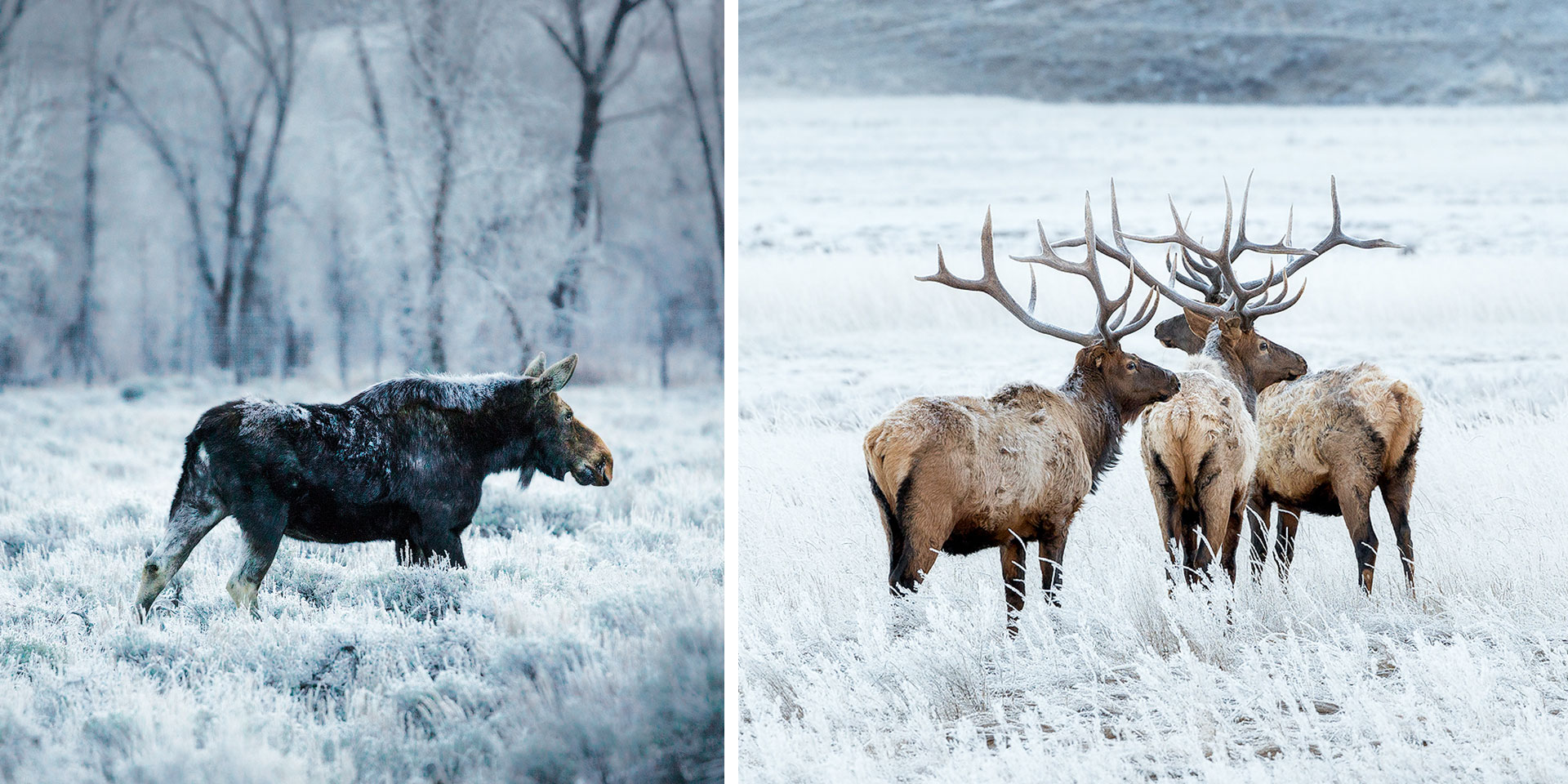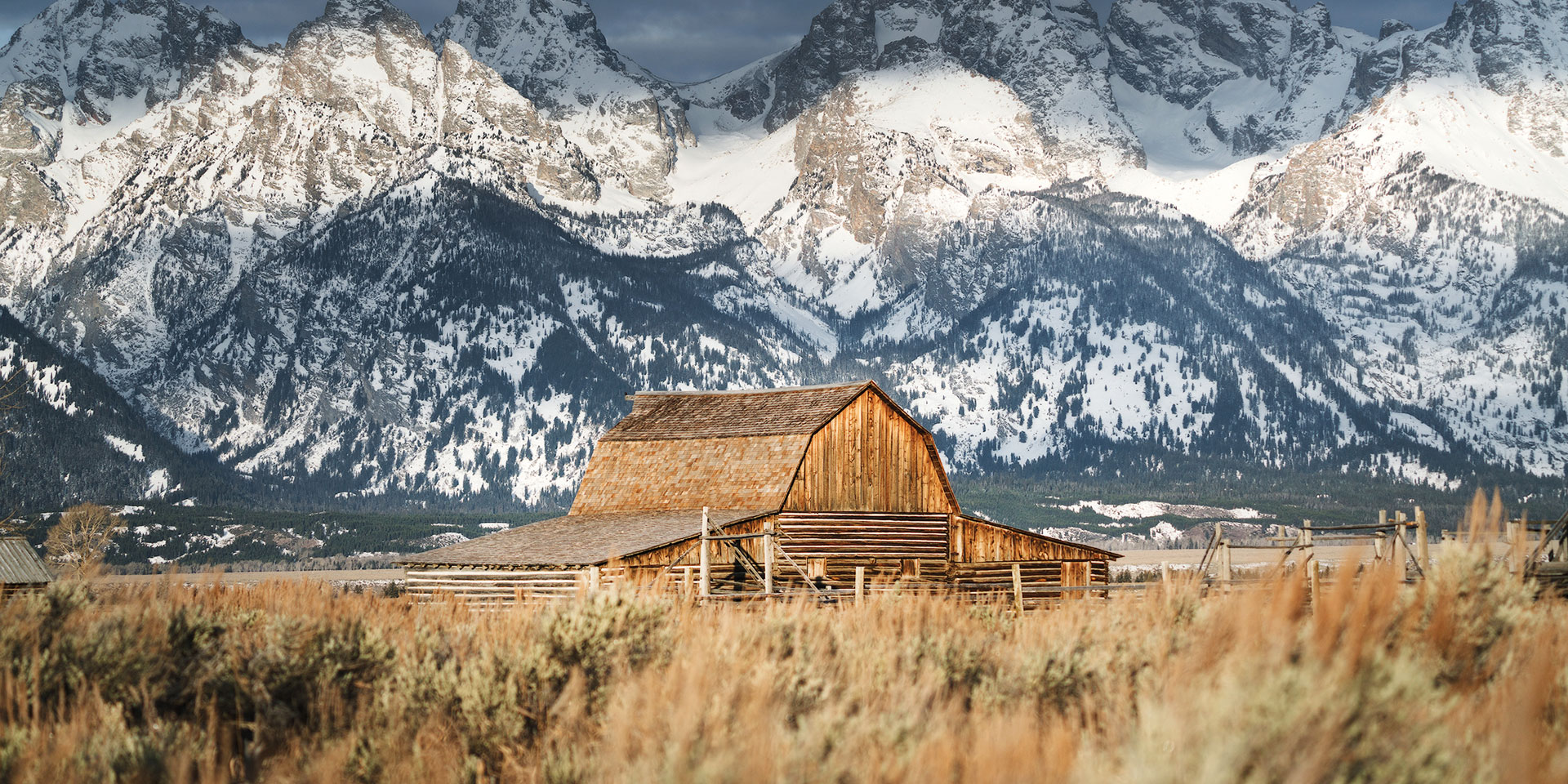Jackson Hole has long been the holy grail for outdoors photographers, as it offers the best of all worlds: a quaint mountain-town vibe with an active ski scene and a vast national park, Grand Teton, just beyond its borders.
It’s important to not get too swept away by the grandeur of the nature that will engulf you, though, and set your sights (and your lens) on the small details that make a trip memorable.
California-based photographer Eric Rubens hopscotches the world capturing compelling outdoor images from Croatia to Jordan and everywhere in between, while traveling duo Matthew Hahnel and Renee Hahnel use their Seattle home as a jumping off point to explore the mountainous regions of the Western United States.
The trio of ace photogs returned from a trip to SpringHill Suites Jackson Hole, where they explored Wyoming’s varied landscape and divulged tips for creating compelling Instagram content of the town and its wild environs.
Town of Jackson Hole

A lovely downtown square with a distinctly Western feel anchors Jackson Hole. But capturing such a scene can be tricky with people and cars cluttering your vantage point. Eric says photographers can avoid unwanted objects in their viewfinder by getting up early before everyone else wakes to experience the quietness of the streets as the sun rises.
Bonus: “You’ll often get lucky with animal sightings earlier in the day when they’re active,” he says. Matthew and Renee are fans of the elk antler archways in the town square. “They present many options for photos, especially at night when the lights come on,” the couple shares.
Instagram tip: Eric suggests taking advantage of the warmth slider on Instagram, which can really change the feel of the pic. “Slide to the left for a colder, winter feel or to the right to emphasize the warmer sunrise vibe.”
Grand Teton National Park

Bundle up, as you’re getting up before the sun to head into the heart of the national park. Sunrise and sunset are the best times to shoot and take advantage of the beloved “golden hour,” but they’re “also generally the coldest,” Eric says.
Dress appropriately, arrive early and stage your scene to find a unique composition, he advises. “As convenient as the vistas are, they’re generally the ones 99 percent of the other people take pictures from.”
Adds Matthew, “Try getting to multiple vantage points throughout the park and along Highway 191 from north to south to capture completely different images of the same mountains.”
Instagram tip: “Using the Rise filter in Instagram can really help brighten and warm the center of the pic,” says Eric.
Antelope Flats in Grand Teton
Antelope Flats is one of the Matthew and Renee’s favorite areas to shoot the Grand Teton. “The Moulton Barns along here are the classic Grand Teton photo, and for good reason,” Matthew says. “Sunrise light is amazing here as it first hits the barns.”
Bison also often graze in the area, but keep a good distance, he advises. Eric tells budding photographers, “Be patient. People who photograph wildlife often can attest to the effort that goes into capturing each shot. Very rarely will you drive up and witness the perfect moment right away. Approaching wildlife can always be dangerous, so exercise caution at all times.”
Instagram tip: Eric tells us, “I often increase the shadows in wildlife shots, which you can do in-app, to help show off the details.”
Sunset in Grand Teton

Sunset is trickier to capture than most people realize, particularly as you need to take into account which way the sun will set and if it will cast shadows in your image. To ensure you’re properly set up, Eric says to arrive at your desired spot early to scout it out.
“Once the sun dips behind the mountains, the landscapes will get dark quickly. I always make sure I arrive an hour or so early so I can find the composition I want. Also, be patient because usually most of the color in the sky will come after the sun has set.”
Instagram tip: Says Eric, “Play with the saturation slider to give your sunset an extra pop!”
Snowmobiling in Togwotee High Mountain

“As with any activity where you need both your hands free, having an action cam you can mount on your helmet, chest or vehicle will allow you to capture your experience in a safe way,” Eric says. He adds that switching around the angles ensures variety and that you’ll get different shots from all the ones you see on Instagram.
Instagram tip: “If you’re getting too much glare from the sun on the snow, turning down the highlights in Instagram can help recover details in the snow tracks,” says Eric.
Winter in Grand Teton
To Matthew, winter is arguably the most beautiful time in the park, but it comes with many challenges. “Access to some of the most photogenic parts of the park will require long snowshoe treks, and the cold can be absolutely brutal,” he shares.
“Always come prepared with the proper gear and a thirst for adventure if you plan to take photos in winter in Grand Teton National Park.” The weather can change quickly, so be prepared for the elements and have a back-up plan when things don’t go the way you expect.
Instagram tip: “Always remember that batteries die quicker in the cold so have a backup source for your camera, cell phone and all essential tools,” according to Eric. “I often use the Clarendon filter in Instagram to help emphasize winter blues.”
Park Wildlife

You’ll find moose, elk, bison, deer, bear and the more discreet mountain lion populating the Grand Tetons. Matthew says to pack a long lens.
Eric adds that when shooting wildlife of any kind, “binoculars are your friend.” Since you’ll often be shooting far away out of the range of a zoom lens, “getting a look into the distance can provide a helpful hint as to whether you should stick around or take off to the next spot,” he says.
Instagram tip: Eric suggests using a slight vignette in Instagram, because it will “emphasize the center of your pic and draw the viewers eyes to your subject.”




